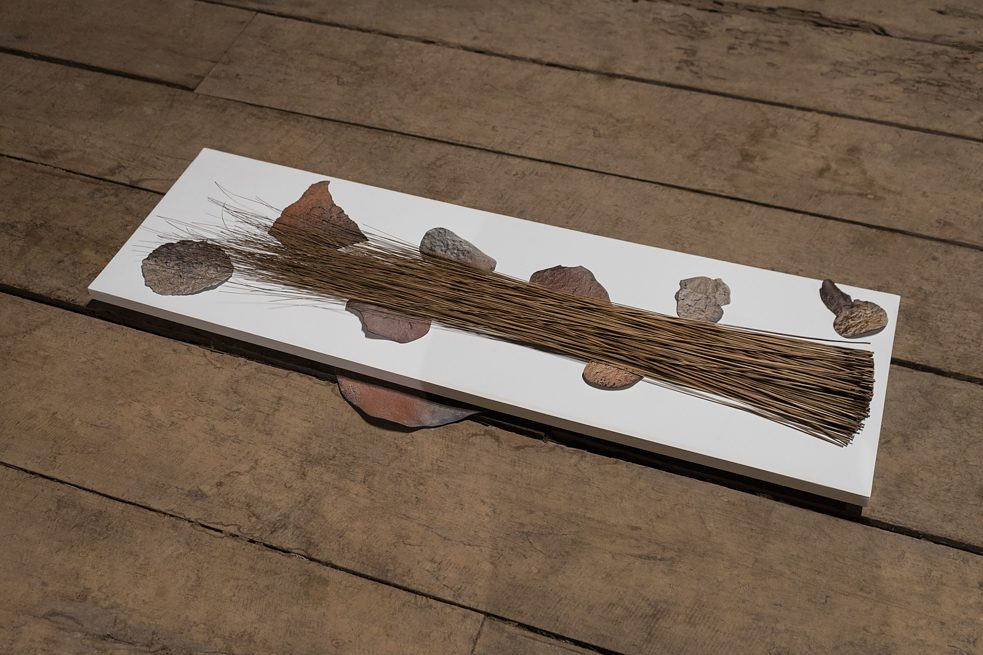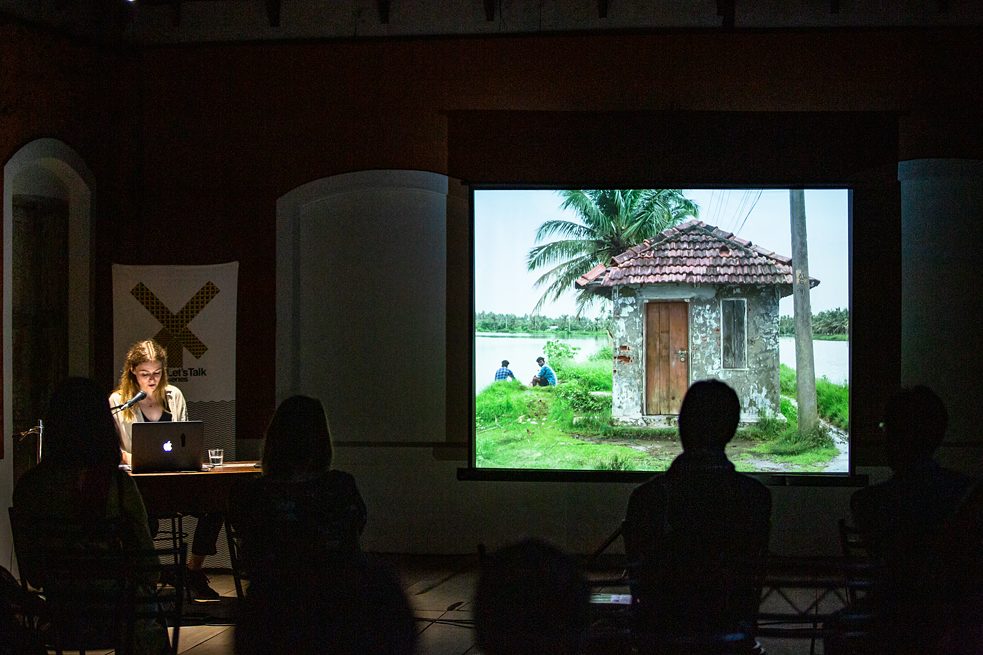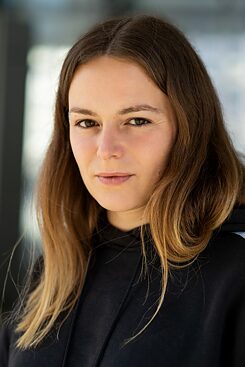I arrived at Kochi airport on July 21, after spending an intensive orientation week with the
bangaloREsidency team. The driver of the Kochi Biennale Foundation picked me up and we headed to Fort Kochi through a sudden bout of torrential rain. Later, I started setting up my studio at Pepper House - an old heritage building that is situated directly at the waterfront and is full of huge working spaces. From my studio window, I was able to observe the coming and going of immense container ships. Every week they seemed to disappear more and more behind the blue-grey fog which always appeared shortly before it started to rain.
KUMBALANGI
When the weather was good, I went on motorbike tours along Kochi’s coastline with a staff member from the Foundation. One day, early in the morning, we drove through Kumbalangi - a village located on the outskirts of Kochi amidst a network of lagoons, lakes and rivers. We stopped and walked along a narrow path to watch fishermen preparing for their day. The first person we met was Lalu, a banker from Mattancherry, who invited us to his house where he had lived with his family for several decades. His father used to work as a fisherman. Over the next week, we visited his family almost every day. We talked about the weather and had some fish from the farm right next to their house. Finally, I met Lalu’s mother Lakshmi. She told me more about how the village and its climate had changed over the last 50 years. Lakshmi also spoke about various buildings that we would pass every day on our way to her house and whose surfaces were heavily affected by the rain.
 Paper imprints drying on the facade of a building in Kumbalangi.
| © Juliane Tübke
Paper imprints drying on the facade of a building in Kumbalangi.
| © Juliane Tübke
 A dried paper imprint peels away from the facade.
| © Juliane Tübke
A dried paper imprint peels away from the facade.
| © Juliane Tübke
WEATHERING
I started to think more about the weather and how it affects our lives and surroundings in general. Exactly one year ago, there was a big flood in the state of Kerala where Kochi is located. Consequently, the whole Foundation team began to monitor the movements of the clouds over Kerala and to follow the news closely for any signs of further floods. Due to its elevated location and geography, Kochi is usually spared the seasonal floods and this year was no exception.
The weather would be a predominant theme in the interviews I would conduct over subsequent weeks. I decided to work in Kumbalangi and talk to the people I met there. During my conversations, I was aided by Jith Joseph, who is a member of the Biennale Foundation and whose father also used to work as a fisherman. Naturally, without him translating, I wouldn't have been able to have these conversations. We often started the interviews with a chat about the weather but eventually ended up talking about something completely different. After each interview, I would also roam the small village for hours photographing my surroundings. The stories and photos would later feed ideas for a project that I plan to realise back in Germany. For this project, I am going to interweave my interview recordings and transcriptions with paper imprints of Kumbalangi's architectural surfaces. When creating these imprints, I was assisted by Antony Ajay, another member of the Biennale Foundation. Additionally, I decided to give myself an extra constraint and only use those buildings that Lakshmi had mentioned in our conversations.
 Installation view of the open studio at Pepper House.
| © Juliane Tübke
Installation view of the open studio at Pepper House.
| © Juliane Tübke
 Installation view of the open studio at Pepper House.
| © Juliane Tübke
Installation view of the open studio at Pepper House.
| © Juliane Tübke
PEPPER HOUSE
When the rain was too heavy, I spent a lot of time in my studio and started working with the architectural surfaces of Pepper House itself. The imprinting process revealed the tactile textures of the weathered surfaces which included traces of minor repairs. I then emphasised these surfaces by applying black pigments to the imprints. For the open days at the studio, I installed a selection of these paper wall imprints as well as floor imprints that I'd made from clay. I also presented my research material from Kumbalangi as part of the Let's Talk series on August 14th. While preparing for my talk, I came to the realisation that my stay in Kochi had a huge impact on my working process - an impact that I had previously underestimated. One of the strongest influences were the conversations with Lakshmi and Jith that were to significantly change my way of working over the ensuing weeks.
 Presentation in the framework of the Let’s Talk Series organised by the Kochi Biennale Foundation
| © Kochi Biennale Foundation
Presentation in the framework of the Let’s Talk Series organised by the Kochi Biennale Foundation
| © Kochi Biennale Foundation
Considering I only spent 4 weeks in Kochi, my time there was surprisingly productive. Thanks to the great support of the Goethe-Institut Bangalore and the Kochi Biennale Foundation, I was able to collect enough material to develop a new body of work in Berlin. This wouldn't have been possible without the excellent organisational skills of the
bangaloREsidency team, who enabled us to have an inspiring and productive stay in India. Also, I'd like to thank all the staff of the Kochi Biennale Foundation, especially Jith Joseph and Antony Ajay, for their tremendous daily support and their endless energy. Last but not least, I want to thank Malabar House for their generous support in providing me with accommodation. Back home, I'm now hard at work developing my project and I'm looking forward to presenting the results of my research in Kochi next year.






